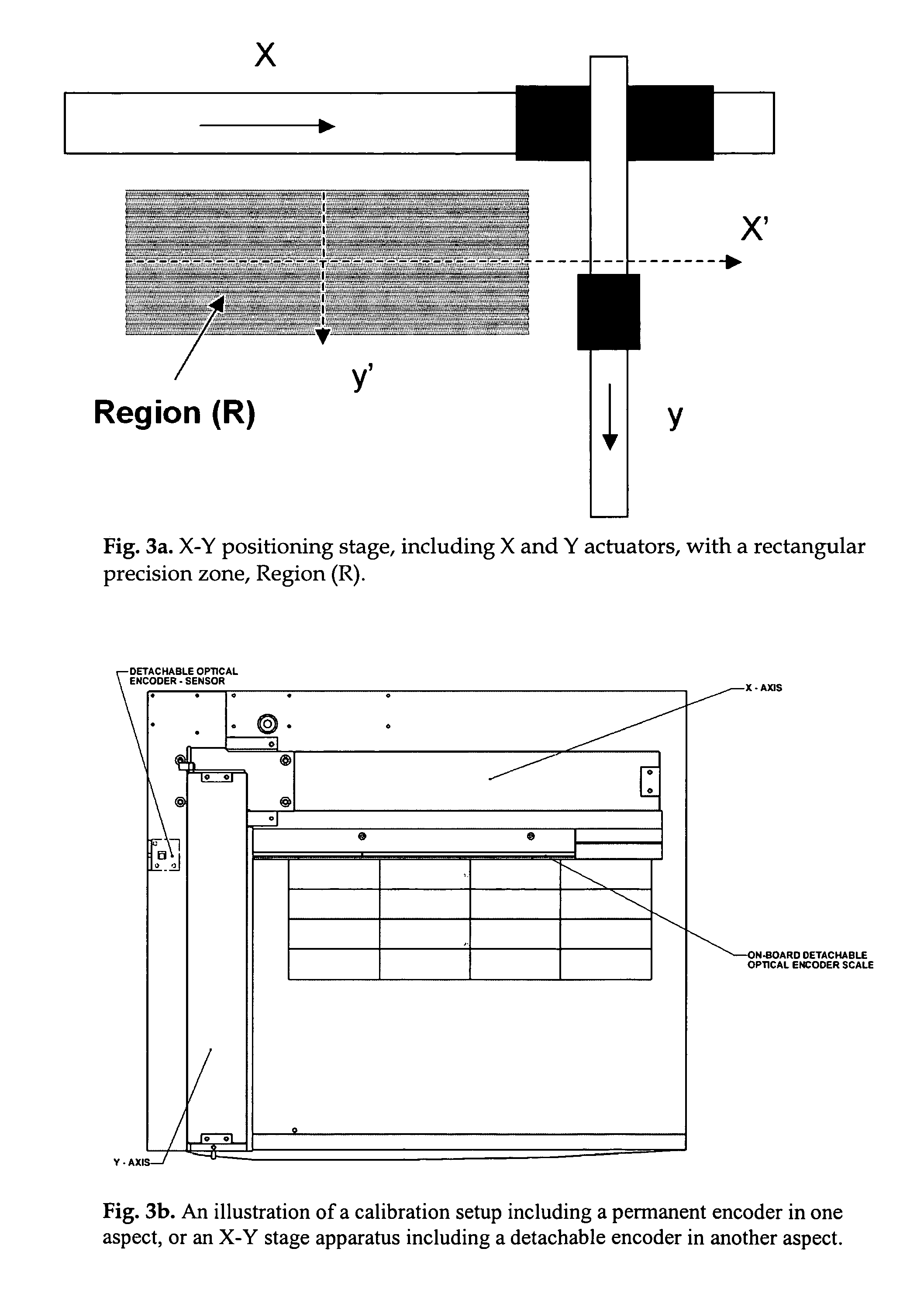Method and apparatus for precise positioning of an object with linear stepper motors
a linear stepper motor and precise positioning technology, applied in the direction of motor/generator/converter stopper, multiple dynamo-motor starters, motor/generator/converter stoppers, etc., can solve the problem of introducing error between the desired and actual orientation of the object moved by the motor, and limiting the precision and smoothness of the linear stepper motor. the effect of precision positioning, high precision and reduced positioning error
- Summary
- Abstract
- Description
- Claims
- Application Information
AI Technical Summary
Benefits of technology
Problems solved by technology
Method used
Image
Examples
Embodiment Construction
[0043] According to one embodiment, as shown in FIG. 1, a linear stepper motor includes a moving forcer 20 and a stationary platen 10. The forcer 20 includes two coils (A and B) inserted in steel cores with teeth 24 and a single permanent magnet encapsulated in an aluminum housing. The forcer 20 moves on air-bearings or wheels along the platen 10: e.g., a photo-chemically etched steel bar with teeth 12 perpendicular to the axis X in FIG. 2 (also shown as a cross-section in FIG. 1). The forcer 20 has 4 sets of teeth 24 facing the teeth 12 of the platen 10 (e.g., at a distance of 40 microns). The distance between these 4 sets of teeth is not a multiple of the platen teeth pitch, but there is an offset so that only one set of the teeth would face the platen teeth. The other sets are offset by ¼, ½, and ¾ of the pitch. By applying the electric current to the first coil (A) the first set of teeth will align with the platen teeth. When the current in A is zero, but the current in the coil...
PUM
 Login to View More
Login to View More Abstract
Description
Claims
Application Information
 Login to View More
Login to View More - R&D
- Intellectual Property
- Life Sciences
- Materials
- Tech Scout
- Unparalleled Data Quality
- Higher Quality Content
- 60% Fewer Hallucinations
Browse by: Latest US Patents, China's latest patents, Technical Efficacy Thesaurus, Application Domain, Technology Topic, Popular Technical Reports.
© 2025 PatSnap. All rights reserved.Legal|Privacy policy|Modern Slavery Act Transparency Statement|Sitemap|About US| Contact US: help@patsnap.com



